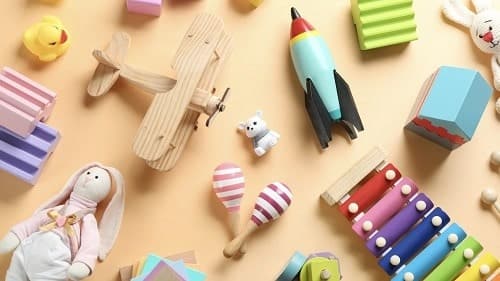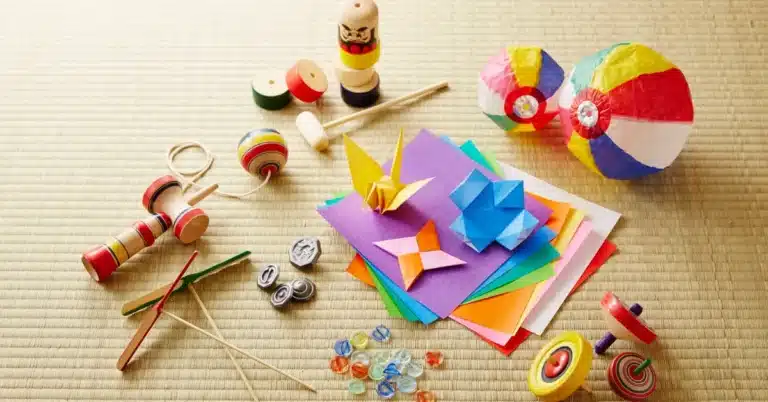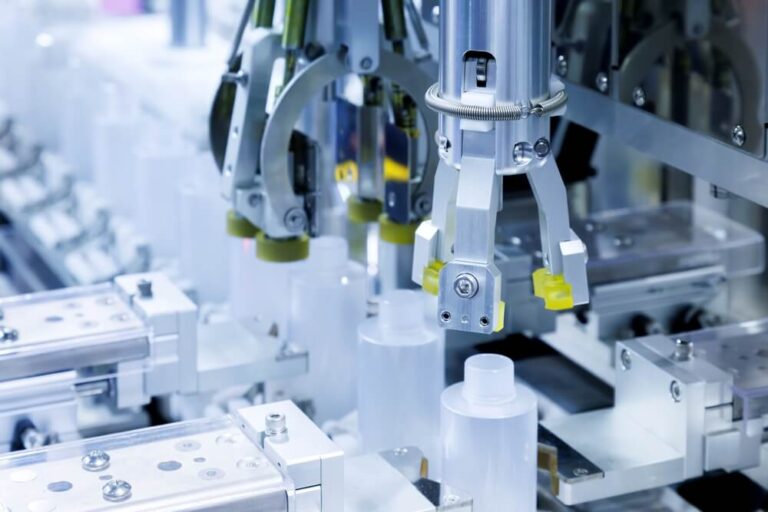Private label baby products offer entrepreneurs a powerful path to market, but navigating safety regulations and compliance requirements can feel overwhelming for first-time creators. The truth is, you don’t need to be an expert to launch successfully. You just need the right roadmap.
Parents prioritize safety above everything else when choosing products for their babies. That’s where Gembah comes in. As an end-to-end product development platform, Gembah connects entrepreneurs with vetted manufacturers and compliance experts who understand the unique challenges of the baby products category.
This guide walks you through every step of creating compliant, safe baby products—from understanding white label versus private label options to passing Amazon’s documentation requirements. Whether you’re launching your first product or expanding an existing brand, you’ll learn exactly what to do, what to avoid, and how to grow sustainably.
Note: If your idea is a brand-new invention with no close factory analog, you are not doing white label or private label. You need unique product development, with industrial design, engineering, and staged validation builds. We will cover that journey in a separate post. Use this guide only if you are adapting an existing product family or customizing a current factory’s design.
TL;DR
Choose white label to test demand quickly, choose private label to control materials, design, and pricing power. If your concept is a true invention with no factory baseline, follow a unique product development path instead, not white or private label. Build safety into the specification, use materials that meet United States children’s product safety law, and verify with an independent laboratory recognized by the Consumer Product Safety Commission.
Prepare a Children’s Product Certificate, tracking labels, clear warnings, and all Amazon listing documents before you go live. Launch a pilot of 50 to 100 units to prove demand, gather reviews, and set a single “golden sample” for quality control. Vet baby-focused factories for strong quality systems and true knowledge of compliance. Price with disciplined cost math and packaging, and target gross margins of 50 to 60 percent. If you want help, Gembah connects you with vetted manufacturers and compliance experts from first spec to shipment.
Key Points
- Pick your path: White label moves fast with minimal changes. Private label gives control over ingredients, materials, and design so you can defend margin.
- Safety first: Meet United States children’s product safety law and rules enforced by the Consumer Product Safety Commission and the American Society for Testing and Materials. Keep lead below 90 parts per million and phthalates under 0.1 percent in accessible parts.
- Prove it small: Start with 50 to 100 units, read every review, fix issues, and lock a single “golden sample” before larger orders.
- Documents ready before listing: Provide a Children’s Product Certificate, third-party test reports from a recognized laboratory, clear warnings, and tracking labels. Amazon may request these files during approval.
- Protect margin: Private label brands often earn higher gross margins than factory brands. Aim for 50 to 60 percent by knowing your landed cost, packaging cost, and marketplace fees.
- Use expert help: A platform like Gembah can handle factory vetting, testing coordination, documentation, and production management so you launch with confidence.
- New invention path: If no close factory analog exists, skip white and private label. Use unique product development with design for manufacturing and staged validation.

Understanding Private Label Baby Products and Product Planning
Understanding the core difference between white label and private label baby products determines your entire development strategy, timeline, and investment level. The baby products market reached $240.54 billion in 2024, with online retail growing 12%, creating massive opportunity for new brands.
White label vs. private label vs. unique development: choosing your path
White label products are pre-made by manufacturers and sold to multiple brands. Each brand simply adds its own logo and packaging. The actual product—whether it’s a baby blanket, diaper cream, or bottle—remains identical across all brands selling it. This approach offers the fastest route to market because products are already tested and proven. You skip the complex design phase entirely.
The downside? Zero exclusivity. Your competitors can sell the exact same product. Price competition becomes inevitable when parents discover identical products under different brand names.
Private label products are customized exclusively for your brand. You control the formulation, ingredients, materials, and design specifications. The manufacturer produces this product only for you. This model requires more upfront investment and longer development timelines but creates true brand differentiation. You can command higher prices because customers can’t find your exact product anywhere else.
Real-world success stories demonstrate both approaches work. PureBorn, which launched organic bamboo nappies in Dubai, accelerated growth through 2023-2025 by partnering with larger manufacturers while maintaining focus on natural materials and environmental standards. The brand quickly established itself as a market leader by setting new sustainability benchmarks.
Twin sisters behind Loulou Lollipop identified a gap for safe, stylish teething solutions, launching with a modest personal investment in 2023. Within a year, they expanded from teething toys into tableware, muslin blankets, and infant comfort accessories, building a devoted parent following through strong design and rigorous CPSC, ASTM, and CPSIA compliance.
Start with white label if you’re testing market demand with minimal risk. Choose private label when you’re ready to build a defensible brand with unique features parents can’t find elsewhere. Many successful brands begin with white label to generate cash flow, then transition to private label as they scale.
Choose unique product development when your product does not map to an existing platform, when you require new mechanisms, electronics, or formulations, or when light modification cannot deliver your claims. The path typically includes:
- Problem definition, risk analysis, and proof of concept
- Industrial design and engineering with design for manufacturing
- EVT, DVT, and PVT build phases with pre-compliance checks at each gate
- New tooling for custom parts, software or firmware if applicable, and full documentation for CPSC and ASTM testing
Budget and timeline are larger than private label. Plan for dedicated design costs, formal testing, and staged pilots before scale. We will cover the full unique development journey in a separate post.
Pick a beginner-friendly category
Certain baby product categories present lower barriers to entry for first-time creators. Soft goods like blankets, bibs, and burp cloths require less complex manufacturing processes than items involving electronics or multiple moving parts. The baby cosmetics and toiletries segment represents the largest revenue generator in North America.
Baby skincare products often start with simpler formulations that reduce regulatory complexity while meeting strong market demand. Yumi, founded by CEO Angela Sutherland, launched traceable-ingredient baby food through an online subscription model within six months of concept formation in late 2023. By focusing on developmental nutrition and ingredient transparency, Yumi achieved rapid word-of-mouth adoption among health-conscious parents.
Avoid categories with heightened regulatory scrutiny until you gain experience. Sleep products, car seats, and items making health claims face stricter testing requirements and longer approval timelines.
Write a one-page product brief
Your product brief should answer five core questions in clear, specific terms. What problem does this solve for parents? What makes it different from existing options? What materials will you use? What’s your target price point? Who is your ideal customer?
This document becomes your North Star throughout development. It prevents scope creep and keeps your team aligned on priorities. Every decision during sampling and manufacturing should trace back to this brief.
Include basic specifications like dimensions, colors, and materials. Avoid vague descriptions. Instead of “soft fabric,” specify “100% organic cotton with GOTS certification.” Precision here prevents misunderstandings with manufacturers later.
Safety considerations must drive every design decision for baby products. This means eliminating small parts that present choking hazards, avoiding sharp edges, and selecting materials free from restricted substances. Build relationships with manufacturers who understand baby product compliance deeply. As Gembah’s platform demonstrates, connecting with factories that specialize in baby goods ensures they’re already familiar with CPSC requirements and third-party testing protocols.
Plan for testing costs in your initial budget. Third-party lab testing typically ranges from $2,000 to $5,000 per product, depending on complexity. This investment is non-negotiable for products entering the U.S. market.
Finding and Vetting Manufacturing Partners
Finding reliable manufacturers requires systematic vetting rather than hoping for the best. The right partner understands compliance deeply and maintains consistent quality standards.
Where to look and what to ask
Product development platforms like Gembah streamline this entire process by maintaining a vetted network of over 2,000 factories. Their technology-driven screening identifies manufacturers with proven track records in specific baby product categories, saving you months of research and risk.
Start with fundamental capability questions. How long have you manufactured baby products? What certifications do you hold? Can you provide references from other brands? Request documentation of their quality control processes. Ask specifically about in-process monitoring, sample approval stages, and final product testing before shipment. Manufacturers experienced with baby products should describe these procedures easily.
Verify they’re the actual producer, not a trading company that will outsource your order. Request photos of their production floor and ask to schedule a video call during production hours. Legitimate manufacturers welcome this transparency.
Confirm they understand U.S. compliance requirements. Ask whether they’ve produced items requiring Children’s Product Certificates and which CPSC-accepted labs they work with. Their familiarity with these terms signals experience with American market requirements.
Request copies of recent CPCs from other clients. While you can’t use their certificates, reviewing them shows the factory understands required documentation and works with accredited testing labs. Ask for photos documenting their most recent safety audit or facility inspection. ISO 9001:2015 certification indicates established quality management systems, though it’s not mandatory under CPSC regulations.
Order samples and run comparison tests
Never commit to mass production without physical sample evaluation. This single step prevents the majority of product quality disasters. Comparing samples from multiple manufacturers reveals significant quality variations you can’t detect from photos or descriptions.
Request samples that match your specifications exactly, including intended materials, colors, and packaging. Pay for samples rather than accepting free ones. Paid samples typically reflect actual production quality more accurately than promotional freebies. Budget for this comparison phase. Samples plus shipping typically cost $50-$200 per factory, depending on product complexity.
Inspect samples as if you’re a concerned parent shopping for your own baby. Look for loose threads, rough seams, or weak attachment points. Check for any sharp edges or small components that could detach. Test durability through normal use simulation. Wash fabric items according to care instructions and examine how they hold up. Drop toys from typical heights. Pull on zippers and snaps repeatedly.
Smell the product carefully. Off-gassing odors or chemical smells suggest questionable materials or poor ventilation during manufacturing. Baby products should smell neutral or mildly pleasant, never harsh or synthetic. Compare samples against your product brief. Does the actual sample match what you specified? Note any deviations, even minor ones, and decide whether they’re acceptable or require correction.
Select the manufacturer that best balances quality, communication, and commercial terms. The lowest price rarely indicates the best value for baby products where quality and safety are paramount. Consider the factory’s responsiveness throughout the sampling process. Manufacturers who communicate clearly during small orders typically maintain that standard during larger production runs.
Document your selection rationale. Record what you loved about the winning sample and what concerns you raised with the runner-up options. This documentation proves valuable when conducting quality checks during mass production.
Compliance, Safety Standards, and Documentation
Material selection and proper documentation directly impact both product safety and regulatory compliance. Making informed choices upfront prevents costly reformulations later and ensures smooth marketplace approval.
Material safety and restricted substances
Federal regulations explicitly restrict certain substances in baby products. Lead must stay below 90 ppm in surface coatings and substrates. Phthalates are banned above 0.1% concentration in accessible plasticized parts. Create a reference list of prohibited materials specific to your product category. ASTM F963-23 outlines strict limits for heavy metals including antimony, arsenic, barium, cadmium, chromium, mercury, and selenium.
California Proposition 65 lists hundreds of additional restricted chemicals, including BPA and certain flame retardants. While technically only required for California sales, most national brands simply avoid these substances entirely to simplify compliance.
Request a complete bill of materials from your manufacturer listing every component and its composition. This should include fabrics, dyes, adhesives, finishes, and any other substances used in production. Verify that materials comply with current restricted substance lists. Don’t assume compliance. Ask manufacturers to confirm in writing that all materials meet CPSC and ASTM requirements.
For products containing chemicals, textiles, or coatings, request Material Safety Data Sheets (MSDS). These documents detail handling requirements and safety information that may indicate problematic substances. Ask manufacturers to provide written confirmation that all materials comply with CPSC regulations and relevant ASTM standards. Request certificates of analysis for raw materials when available. Understand that verbal assurances mean nothing from a compliance standpoint. Documented confirmation creates a paper trail that supports your due diligence if issues arise later.
Critical 2024-2025 compliance updates
The CPSC issued a mandatory rule for infant support cushions (effective May 5, 2025) under 16 CFR 1243, targeting suffocation, entrapment, and fall hazards. The rule applies to loungers, head positioner pillows, sleep and anti-rollover pillows, wedge pillows, and multipurpose nursing pillows marketed to infants. Products must meet new performance, marking, labeling, and instructional requirements including hazardous component elimination, restraint and seam strength tests, incline angle and firmness limitations, and mandatory consumer instruction literature.
Nursing pillows are now classified as “durable infant or toddler products” (effective April 23, 2025), triggering mandatory product registration programs, third-party testing and certification, and enhanced warnings including “move baby to sleep product if caregiver is drowsy.”
The CPSC mandates compliance with ASTM F2236-24 for soft infant and toddler carriers (enforced February 22, 2025), updating the prior voluntary standard with enhanced durability, marking, and instructional requirements. All baby carriers sold after this date must be tested to updated specifications and certified.
Amazon implemented stricter compliance enforcement in September 2024, requiring sellers to provide third-party test reports matching newly-updated federal and ASTM standards, product registrations and traceability documentation for newly-defined durable goods, and updated CPSC-compliant warnings and instructional content on listings. Non-compliant listings risk suspension or removal.
Building your compliance documentation folder
Amazon’s September 2024 policy changes require comprehensive documentation before listing approval. Organize all compliance documentation in a centralized digital folder with clear file naming conventions.
Include your Children’s Product Certificate (CPC), which certifies that your product meets all applicable federal children’s product safety rules. Store third-party test reports from CPSC-accepted laboratories showing compliance with mandatory standards. These reports must cover lead content, phthalates, flammability, and any category-specific requirements.
Keep copies of instructional literature, warning labels, and packaging specifications. Amazon may request these to verify that your listing accurately represents the physical product. Include your product registration documentation and tracking label information. Every children’s product must have permanent distinguishing marks identifying the manufacturer, production date, and batch number.
Federal regulations require specific labeling elements for baby products. Your label must display the manufacturer name, location (city and state), and date of manufacture. Include distinguishing marks such as batch numbers or run numbers that identify specific production cohorts. This enables targeted recalls if safety issues emerge.
Display model name and number prominently on both the product and its packaging. Provide U.S. contact information, including a toll-free telephone number when available. Warning labels must use specific language appropriate to your product type. These warnings should be permanently affixed and meet contrast requirements ensuring readability. Gembah’s compliance partners can review your labeling to ensure it meets all regulatory requirements.
Upload compliance documents through the “Manage Your Compliance” dashboard in Amazon Seller Central before submitting your listing. Claims made on your product detail page must be substantiated with supporting documentation. If you claim “100% organic cotton” or “BPA-free,” include test reports verifying these statements. Amazon now requires proof for material claims, certifications, and efficacy statements before approving listings.

Launching Your Pilot and Packaging Strategy
Testing market response with a small production run minimizes financial risk while generating critical customer feedback. Smart packaging protects your product while creating positive unboxing experiences that drive reviews and repeat purchases.
Start with a small pilot batch
Expert guidance consistently recommends pilot batches between 50-100 units for first-time baby product launches. This size provides enough inventory to validate demand without creating costly overstock if the product underperforms. Initial inventory investment typically ranges from $500 to $2,000, depending on product type and manufacturing costs.
Manufacturers may require minimum order quantities (MOQs) exceeding 100 units. Negotiate when possible, or find factories specializing in smaller runs for new brands. Some manufacturers offer flexibility for first orders to establish relationships.
Monitor your sell-through rate closely during the pilot phase. Selling 20-30 units in the first month with positive reviews signals sufficient demand to scale production. Read every review carefully, looking for patterns rather than individual complaints. If multiple customers mention the same issue, prioritize fixing it before your next production run.
Respond professionally to all feedback, both positive and negative. Parents notice how brands handle concerns. Thoughtful responses build trust even when addressing product shortcomings. Use early reviews to refine your listing copy, photography, and messaging. Customer language often reveals benefits you didn’t emphasize or concerns you didn’t address clearly enough.
Once you’ve validated product-market fit and made necessary adjustments, establish a “golden sample” that serves as your production standard. This physical sample represents exactly what every subsequent unit should match. Document every specification in detail. Record materials, dimensions, colors, and assembly details with supporting photos. This documentation prevents quality drift as production continues.
Design packaging that protects and performs
Baby products experience rough handling during distribution. Test your packaging by dropping boxes from waist height multiple times. The product inside should remain undamaged and presentation-ready. Consider ASTM D4169 testing protocols, which simulate distribution hazards during transport. While not federally required, this voluntary testing helps ensure packaging performs reliably.
Use appropriate cushioning materials that secure products without excessive waste. Molded pulp, corrugated inserts, and air pillows provide protection while maintaining a premium feel.
Parents increasingly prioritize sustainability in purchasing decisions. 93% of parents in some markets prefer plastic-free options, creating opportunity for brands that emphasize eco-friendly packaging. Recyclable materials like paperboard and corrugated cardboard reduce environmental impact while appealing to conscious consumers. Clearly mark packaging with recycling symbols and disposal instructions.
Minimize packaging complexity. Multi-material packaging (plastic combined with paper) creates recycling challenges. Single-material solutions simplify disposal and reinforce your environmental commitment.
Place safety warnings and age recommendations prominently on the front panel where they’re immediately visible. Parents scan for this information quickly while shopping. Include clear usage instructions visible through packaging or printed directly on the box. Instructions hidden inside frustrate customers and may lead to improper use.
Feature your brand story and unique selling points on premium real estate. Explain what makes your product different and why parents should choose your brand over competitors. Display required compliance information and certifications clearly but without overwhelming the design. Small symbols and concise text communicate credibility without cluttering packaging aesthetics.
Simple Cost Math
Understanding your true cost structure prevents pricing mistakes that can sink profitability before you even launch. Raw materials represent the largest single expense, especially for baby products where high-quality, hypoallergenic, or organic components command premium prices.
Manufacturing overhead includes direct labor, utilities, maintenance, and facility costs for running production lines. These costs scale with production volume but include fixed minimums. Packaging expenses increasingly impact total costs as brands invest in customized or premium solutions. Eco-friendly materials may cost 15-30% more than conventional alternatives.
Safety testing and regulatory compliance represent 3-7% of production costs for baby products. This includes third-party laboratory testing, certifications, and audits required for market entry. Shipping and logistics cover transportation from the manufacturer to your warehouse or fulfillment center. International shipping adds complexity with customs, duties, and potential delays.
Product development costs include design, prototyping, and testing phases. These upfront expenses range from $17,000 to $200,000 depending on complexity, with simpler products toward the lower end.
Start by calculating your landed cost per unit, including all expenses from manufacturing through delivery to your customer. Add marketplace fees if selling on Amazon, typically 15-20% of your sale price. Target gross margins of 50-60% minimum for sustainable growth. Baby products can command these margins when you clearly communicate value through quality materials, safety features, or unique benefits.
Test price points through small inventory batches before committing to large production runs. Increase prices by 10-15% on a subset of inventory to measure price sensitivity without significant risk. Monitor competitor pricing but avoid competing primarily on price. Parents prioritize safety and quality over minor cost differences for baby products. Position your brand based on value rather than being the cheapest option.
Order quantities that balance per-unit cost savings with cash flow management. Manufacturers typically offer price breaks at 500, 1,000, and 5,000+ units. However, tying up capital in excess inventory costs money through storage fees and opportunity cost. Negotiate payment terms that protect your cash flow. Request 30-50% deposits with the balance due upon shipment rather than full payment upfront. Established manufacturers typically accommodate reasonable terms.

Create:
Profitable Baby Products…Fast
Our Process Takes Products From Market Research to Production -> FAST
Conclusion
Brands that win in baby categories treat safety as part of the product, prove it with independent laboratory testing, and scale only after a clean pilot. Choose white label for speed or private label for true differentiation. Specify materials that meet federal limits, assemble your Children’s Product Certificate and tracking labels, load your compliance files into Amazon, launch a small batch, read every review, fix issues fast, and lock a golden sample before larger orders. Stay current on 2025 updates for infant support cushions, nursing pillows, and baby carriers so you do not pay for relabels or relists.
Want expert help to de-risk manufacturing and pass compliance on the first attempt? Schedule a quick call with Gembah and get your launch plan validated end to end.
If your idea is truly new, follow the unique development track first, then return to this playbook for factory scale, quality control, and channel execution.



